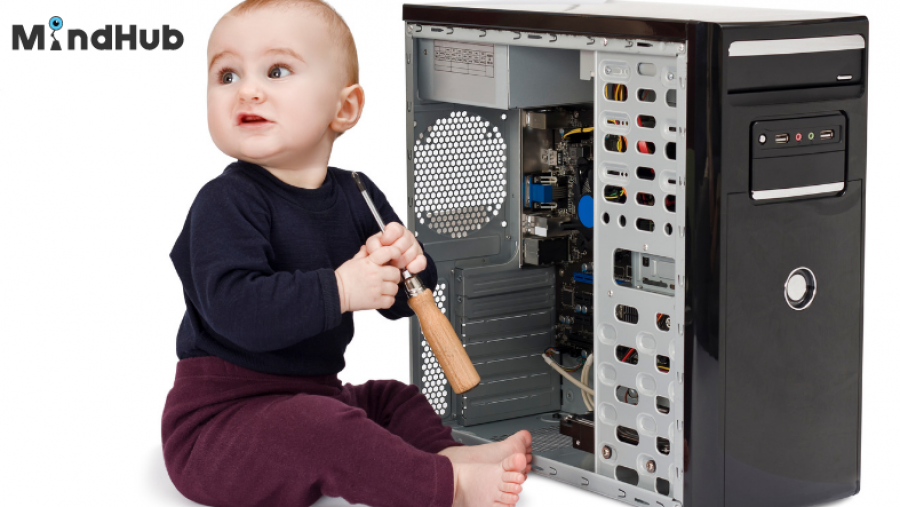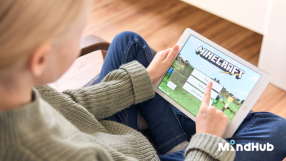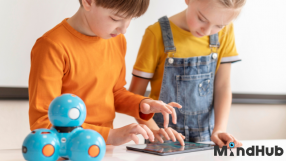
The history of the computer is so old that most of us don’t believe in the development that the machine has gone through to become as we know it today. In fact, the elements involved in building a computer system have undergone a rapid evolution - much more impressive than the development of other machines, such as the automobile.
Every day, technology is evolving, and new components are being developed for computers, entirely dedicated to innovation. And we can only guess how many more changes await us in the future!
Until then, however, it is important to know what the computer is today. These machines can be complex, delicate, and even dangerous for children, but as we know, knowledge is power.
Get to know the computers with MindHub!
For the veritable part of the computer
1.Motherboard
We start with the brain of our computer. The motherboard controls almost all other parts of the computer and provides connections between all other components. We can say that thanks to it, all basic operations are performed.
In addition to synchronizing the actions of each component, the motherboard also works to integrate the overall performance of the computer.
2. The central processing unit (CPU)
After the brain, the second major driving force is the heart. In the case of a computer, this is the CPU. The microprocessor is a chip containing millions of miniature transistors. They help the processor do its main job - the calculations that guide all computer operations. Simply put, the central microprocessor processes the information received from the input devices and outputs the result to the output devices.
3. Memory
It is significant to know about the most important types of memory that the computer has: Random Access Memory (RAM) & Read-Only Memory (ROM). ROM is read-only, and RAM is with random access. RAM stores the data being processed and changes its contents constantly, but when you turn off the computer, it gets lost.
With ROM, on the other hand, the content is already embedded and cannot be changed. It contains, for example, the software that loads the system.
It often depends on the memory of how fast and smoothly the games and the heavier programs installed on the computer will work.
4. Battery and power supply
All kids know that! Thanks to the advanced technological world we live in, it is clear even to the kids that such machines work with electricity. When the computer is connected to power, it flows from the cable into a shielded box that contains a transformer.
For laptops, the current goes directly to the laptop battery and charges it. It works for several hours without the need to be plugged in, and this depends on the production characteristics of the battery and, of course, how you take care of it. It is good to remember and teach your child that constant plugging does not have a good effect on battery life.
5. Modems and Wi-Fi
Modems and cards for wireless connection (Wi-FI) allow computers to communicate with other computer systems. Thanks to the modems and their radio transmission properties, Wi-Fi connection and the corresponding data transfer are possible. In other words - the use of the Internet.
6. Sound and graphics cards
Sound and graphics cards are actually what allows a computer to produce sounds and display pictures. The sound card is responsible for the music and all other sounds, but in order to be heard, it is necessary to connect speakers or headphones to the computer (of course, this does not apply to laptops).
The graphics card (video card) is a board that allows the conversion of images and their display on the monitor in front of us.
7. Cooling systems
The cooling system may seem insignificant compared to all the other parts of the computer listed above, but it is important to remember that it prevents the computer from overheating, which can later lead to system failure.
For computer peripherals
All the additional components that we connect to the computer to make it easier to work with it are well known to us, and children grow up with them and find their application naturally and intuitively.
They know from an early age how to use the mouse to move around the screen and select for action; the keyboard to type or play; the monitor to observe the actions and the speakers that produce the sounds from the computer. They connect via USB cables or wirelessly via USB ports and allow the machine to function properly.
The computer as such - whether portable or desktop, offers endless possibilities and these are just the basics that every child can get acquainted with in order to better understand their actions.
And let's face it, most kids just find this all interesting! Like a truck or a car that they only disassemble so they can figure out how to assemble it back. The curious side of the kids makes them search and explore everything around them!
If you think that in addition to knowing the computer as a machine, your kid would be interested to know how to work with it, then MindHub is the right place for you and your child! Start with a free demo to spark an interest, or check out our startup courses where you can sign up!


